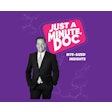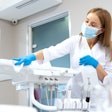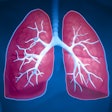
The Organization for Safety, Asepsis and Prevention (OSAP) held its annual Infection Control Boot Camp in Atlanta at the beginning of February. For the second year, OSAP dedicated the day preceding the conference to antibiotic stewardship. This year, the focus was on national prescribing guidelines, antibiotic prophylaxis, penicillin allergies, and the impacts of antibiotic stewardship in dentistry. Experts from dentistry, pharmacology, orthopedic medicine, and public health led the meeting.
What is antibiotic stewardship?
Antibiotic stewardship is a coordinated program that promotes the appropriate use of antimicrobials (including antibiotics), improves outcomes, reduces microbial resistance, and decreases the spread of infections caused by multidrug-resistant organisms. This matters because the U.S. Centers for Disease Control and Prevention estimates that a person dies every 15 minutes in the U.S. from antibiotic-resistant infections. Along with new threats on the horizon, antibiotic stewardship aims to improve how antibiotics are prescribed and used. The goal is to ensure that antibiotics are available when you really need them.
In 2013, dentists prescribed nearly 10% of all outpatient oral antibiotics in the U.S., and it’s estimated that up to 80% of those prescriptions were unnecessary based on existing guidelines. Recent data show that antibiotic prescriptions by general dentists have remained steady, while prescriptions by all prescribers have decreased. It’s clearly time for dentistry to embrace antibiotic stewardship.
Prescribing guidelines
Debbie Goff, PharmD, a professor of pharmacy and an infectious disease specialist at Ohio State University, presented updates in antibiotic stewardship. Some key takeaways included the following:
- Clindamycin is no longer recommended for any therapeutic or dental prophylaxis.
- Dentists are the highest prescribers of clindamycin.
- There is a black box warning for Clostridioides difficile (C. Diff) diarrhea.
- Quinolones should not be prescribed.
- Avoid prescribing ciprofloxacin, levofloxacin, and moxifloxacin.
- There are black-box warnings for quinolones that associate their use with tendon ruptures/tendinitis, peripheral neuropathy, central nervous system effects, exacerbation of myasthenia gravis, and aortic aneurysm/dissection.
- Closely monitor the duration of antibiotic therapy (longer use does not equate to better care).
- Use shorter durations; for example, three to five days.
- Discontinue use 24 hours after symptoms resolve.
- Consider a wait-and-see prescription; have the patient fill it only if their symptoms worsen.
The biggest takeaway from Dr. Goff was the answer to the question, “Shouldn't I prescribe them 'just in case?' The answer is, "The one who prescribes is the one who gets sued." If you follow the prescribing guidelines from the ADA, you are following best practices.
Penicillin allergy testing
Patient allergies can often impact what antibiotics are chosen. Ten percent of the population claims they have a penicillin allergy, whereas less than 1% actually have a true allergy. Using a second-tier antibiotic can reduce efficacy, increase adverse reactions, and increase healthcare costs.
The Michigan Antibiotic Resistance Reduction Coalition (MARR) and OSAP introduced the penicillin allergy assessment algorithm to provide dental teams with a decision-making tool to identify patients who may benefit from having their penicillin allergy evaluated by a healthcare professional before needing antibiotics. The ultimate goal is for all healthcare settings to work to "de-label" the patient, if appropriate, and improve outcomes.
When to premedicate
Confusion still surrounds antibiotic prophylaxis before invasive dental procedures from both dentistry and medicine. There are very few instances where premedicating is recommended. Patients with a history of infective endocarditis, prosthetic valves/materials, congenital heart disease, and/or cardiac transplant recipients need antibiotic prophylaxis, and their cardiologist should be consulted.
When it comes to joint replacements, recent data suggest that premedicating is no longer needed. It has been eight years since the American Academy of Orthopaedic Surgeons (AAOS) has released new guidelines and, given the new data, we can certainly hope updated guidelines will be coming soon. We need to help educate one another on this point. MARR and OSAP have numerous free resources for patients and prescribers regarding premedicating and antibiotic use in general.
Preoptimize patients
My most impactful takeaway was from Dr. Erinne Kennedy, MPH, MMSc, the assistant dean for curriculum and integrated learning at Kansas City University, and her discussion of preoptimizing our patients. There is so much fear tied up in the "what if," but it's time we shifted the thought process to optimizing our patient's oral health to prevent infection from the oral cavity.
What if we spent more time reducing bleeding in our patients' mouths -- not with a more robust brush and floss lecture but with science? After all, if the brush and floss lecture was going to work, wouldn’t we see less periodontal disease today than in years past?
Salivary diagnostics can identify what bacteria are present in the oral cavity before traveling to other body areas. Depending on the findings, oral probiotics might be recommended to shift the oral microbiome of the mouth. Other nonantibiotic treatments like Perio Protect could be the tool patients need to get healthy.
This adjunctive antimicrobial uses Perio Gel 1.7% hydrogen peroxide in a custom-fitted tray to kill oral pathogens in 10 minutes. As the gel is pushed below the gumline, it releases oxygen to change the microenvironment of the periodontal pocket so that healthy bacteria repopulate at the expense of the pathogens.
Imagine instead of considering premedication with antibiotics, we first reduced the pathogenic bacteria in patients' mouths prior to invasive procedures. What if cardiologists and orthopedists called dental offices to ensure the patient had less than 10 bleeding points before surgery? This shift would go a long way to reducing our dependence on antibiotics and improving outcomes.
Amanda Hill, RDH, is a speaker, consultant, and award-winning author who brings over 25 years of clinical dental hygiene and education to dentistry. She is a recipient of OSAP’s Emerging Infection Control Leader award, Hill (also known as the Waterline Warrior) can be reached at [email protected].
The comments and observations expressed herein do not necessarily reflect the opinions of DrBicuspid.com, nor should they be construed as an endorsement or admonishment of any particular idea, vendor, or organization.



















